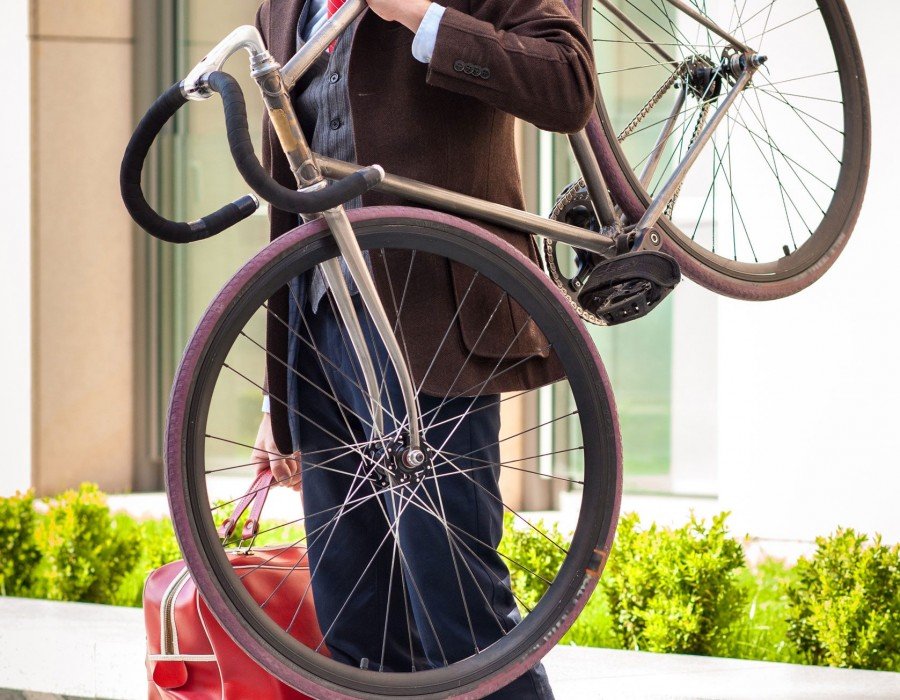Fitness and Performance
How to Alleviate Cycling Knee Pain

We are all told that riding a bike is a low-impact aerobic activity, so why do so many of us suffer from cycling knee pain? Although cycling is a great low impact sport, the repetitive motion of pedalling can lead to a variety of overuse knee injuries (similar to many sporting activities). In this blog I am going to discuss; what anterior knee pain is, how it presents, common mistakes and how to prevent it.
Pain in the front of the knee is a problem that affects 36% of professional cyclists and it is an injury that accounts for over 50% of time lost on the bike. Anterior knee pain can cause problems with the way your muscles perform on the bike and can cause you to develop muscle weakness affecting both power and performance.
Anterior knee pain, also known as Patellofemoral Pain Syndrome (PFPS)
Usually, when people say they experience cycling knee pain it is Patellofemoral Pain Syndrome. PFPS is a diagnosis used as an umbrella term for a variety of different problems which could be causing pain at the front of your knee (around or under the knee cap). It is a generic name used for problems with; the patella tendon, quadriceps tendon, knee bursae, Iliotibial band (ITB), fat pad and pain referring from other areas.
It can affect one or both knees at the same time. It often occurs in teenagers, manual labourers and athletes occurring most commonly in runners, cyclists and hikers. Some of the triggers of this pain are:
- Sitting for too long
- Walking upstairs/hills
- Squatting
- Kneeling
Common causes of PFPS for cyclists:
- Excessive hill training
- Training volume increase/change (hills, distance and sprints)
- In-correct bike set up
- Compensation due to other injuries
In treating a large number of patients complaining of cycling knee pain, there are two common mistakes I have identified which cause the occurrence of the problem. Firstly, over-eagerness can take its toll, with cyclists riding too hard and too fast far too early. To avoid injury it is vital to build up slowly and carefully. Secondly, a very common mistake which can trigger PFPS is not stretching correctly or enough to properly prepare the body and loosen the muscles for riding.
Now that we know what causes PFPS and have identified the common mistakes that cyclists make, the question is: how can we prevent it?
- Having a professional bike-fit (see below what this entails)
- Specific strengthening and flexibility exercises off the bike to better performance on the bike
- Training correctly before any races
- Dynamic stretching pre-ride
- Static stretching post cycling
- Foam rolling
If you are a regular cyclist who competes in races or triathlons, frequent physiotherapy for deep tissue massage and trigger point release techniques can be really beneficial. It will help you maintain good flexibility, posture and gain advice on a specific personal exercise programme to improve/maintain strength and flexibility as well as avoid cycling knee pain in the future.
What is a Bike-fit?
What we offer here at Capital Physio (Currently in Cambridge ONLY)
1-hour assessment and set up with video analysis
Off Bike assessment:
- A full cycling and medical history will be taken before we start set up
- A physical assessment is completed to observe functional range of movement and strength at each joint
On Bike assessment:
- Handle bar set up to correct drop and reach position
- Cleat set up
- Saddle height to correct upper body reach, hip, knee and foot alignment
- Video analysis before and after adjustments
- Rehab program to improve bodily limitations encountered in the bike fit
Article by: Heidi Leech – Chartered Physiotherapist at Bodyset